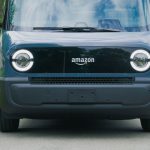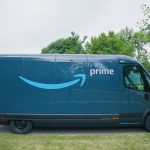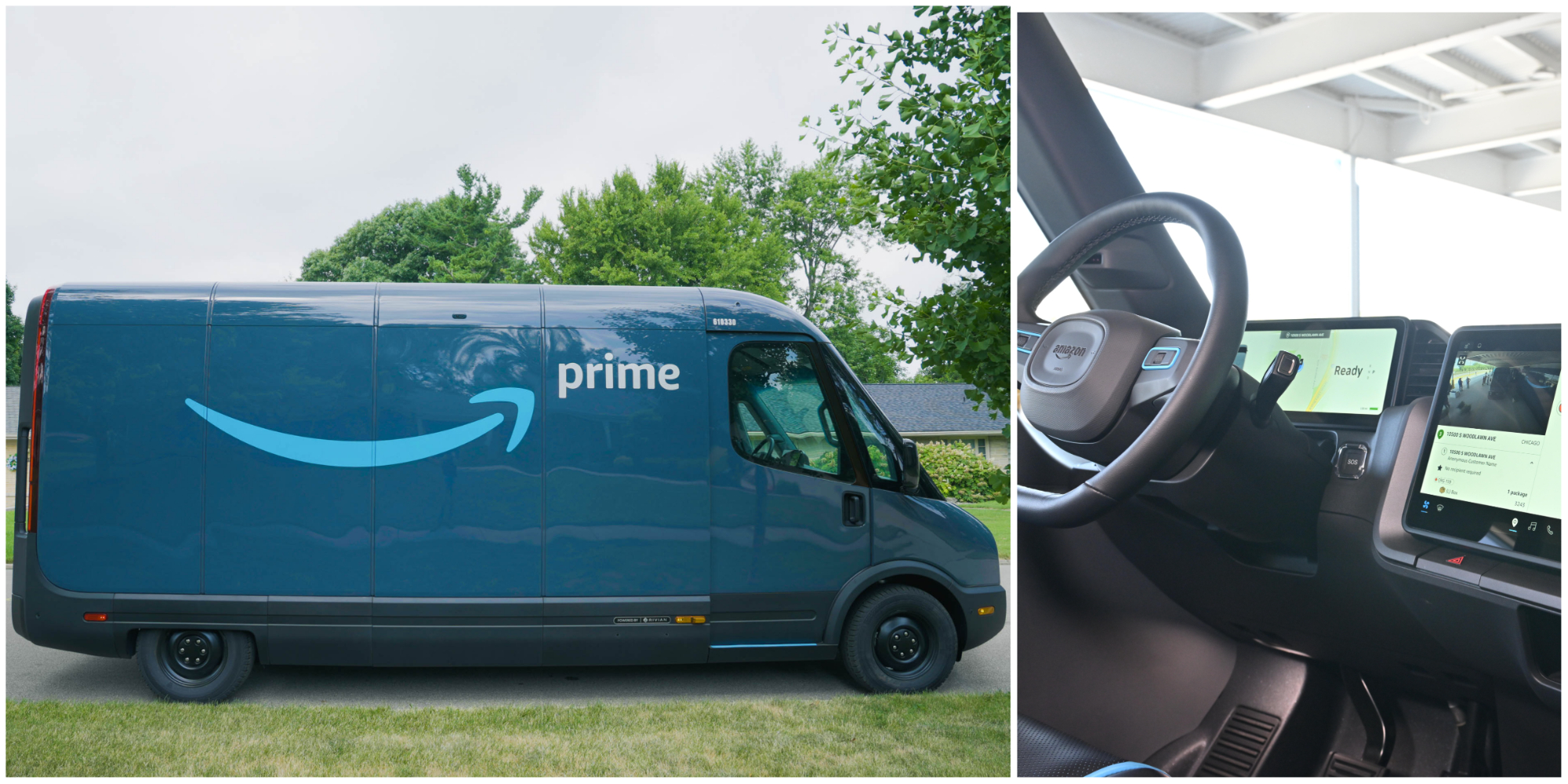

Investor's Corner
Amazon leans on Rivian to deliver packages in 100 U.S. cities for the Holidays
Since Amazon and Rivian announced a partnership for sustainable e-commerce and 100,000 all-electric delivery vans in 2019, the conglomeration has flourished into a successful and groundbreaking package delivery program. The 2022 Holiday season will be Rivian and Amazon’s first delivering packages in the EVs, and the e-commerce giant is depending on the sustainable transportation startup to deliver gifts in 100 U.S. cities this year.
Amazon has already delivered more than 5 million packages in Rivian’s EDV, the acronym for ‘Electric Delivery Van.’ After launching a pilot program this past Summer in a dozen cities, including Baltimore, Chicago, Dallas, Kansas City, Nashville, Phoenix, San Diego, Seattle, and St. Louis, Rivian and Amazon have expanded their fleet of EDVs to over 1,000 units present in more than 100 cities across the United States.
With the 2022 Holiday season approaching, the two companies are now tasked with their biggest challenge by expanding into more cities and delivering more packages than ever. When the holidays roll around, Rivian will deliver Amazon packages in even more cities. Amazon said it will drop off packages in Austin, Boston, Denver, Houston, Indianapolis, Las Vegas, Madison, Newark, New York, Oakland, Pittsburgh, Portland, Provo, and Salt Lake City this year, a small step toward its 100,000 EDV goal by 2030.
Major U.S. cities and regions receiving deliveries with Amazon’s custom electric delivery vehicles. (Credit: Rivian)
Amazon’s Vice President of Transportation Udit Madan commented on the expansion, and while the partnership has come a long way, there is still plenty to accomplish in the next seven years:
“We’re always excited for the holiday season, but making deliveries to customers across the country with our new zero-emission vehicles for the first time makes this year unique. We’ve already delivered over 5 million packages with our vehicles produced by Rivian, and this is still just the beginning—that figure will grow exponentially as we continue to make progress toward our 100,000-vehicle goal.”
Amazon has quickly become a dominating force in the e-commerce world, and its sheer size alone as a business makes it an ideal candidate for testing EV-based package deliveries. The company has a goal to be net-zero carbon by 2040, ten years after it plans to have 100,000 Rivian EDVs bearing its name on the side. It is a necessary step in the company’s mission to be sustainable, and it might not be possible without Rivian.
- Credit: Amazon
- Credit: Amazon
- Credit: Amazon
- Credit: Amazon
- Credit: Amazon
- Credit: Amazon
- Credit: Amazon
“Fleet electrification is essential to reaching the world’s zero-emissions goal,” Rivian’s Chief Growth Officer Jiten Behl said. “So, to see our ramp up in production supporting Amazon’s rollout in cities across the country is amazing. Not just for the environment but also for our teams working hard to get tens of thousands of electric delivery vehicles on the road. They continue to be motivated by our combined mission and the great feedback about the vehicle’s performance and quality.”
While it is important to have a vehicle Amazon feels can lead the charge in the transition to sustainable package delivery, it is also important to keep drivers happy and comfortable in their vehicles. So far, Amazon drivers have expressed positive feedback regarding the Amazon EDV, complementing the vehicle’s tech and safety features.
“We started making deliveries with the electric vehicles from Rivian in August, and my team has had nothing but good things to say about the vans,” Julieta Dennis, owner of Kangaroo Logistics, an Amazon Delivery Service Partner, said. “The safety features, like the automatic emergency braking and 360-degree cameras, are game changers, and the drivers also love the overall comfort of the vehicle.”
I’d love to hear from you! If you have any comments, concerns, or questions, please email me at joey@teslarati.com. You can also reach me on Twitter @KlenderJoey, or if you have news tips, you can email us at tips@teslarati.com.

Investor's Corner
Mizuho keeps Tesla (TSLA) “Outperform” rating but lowers price target
As per the Mizuho analyst, upcoming changes to EV incentives in the U.S. and China could affect Tesla’s unit growth more than previously expected.
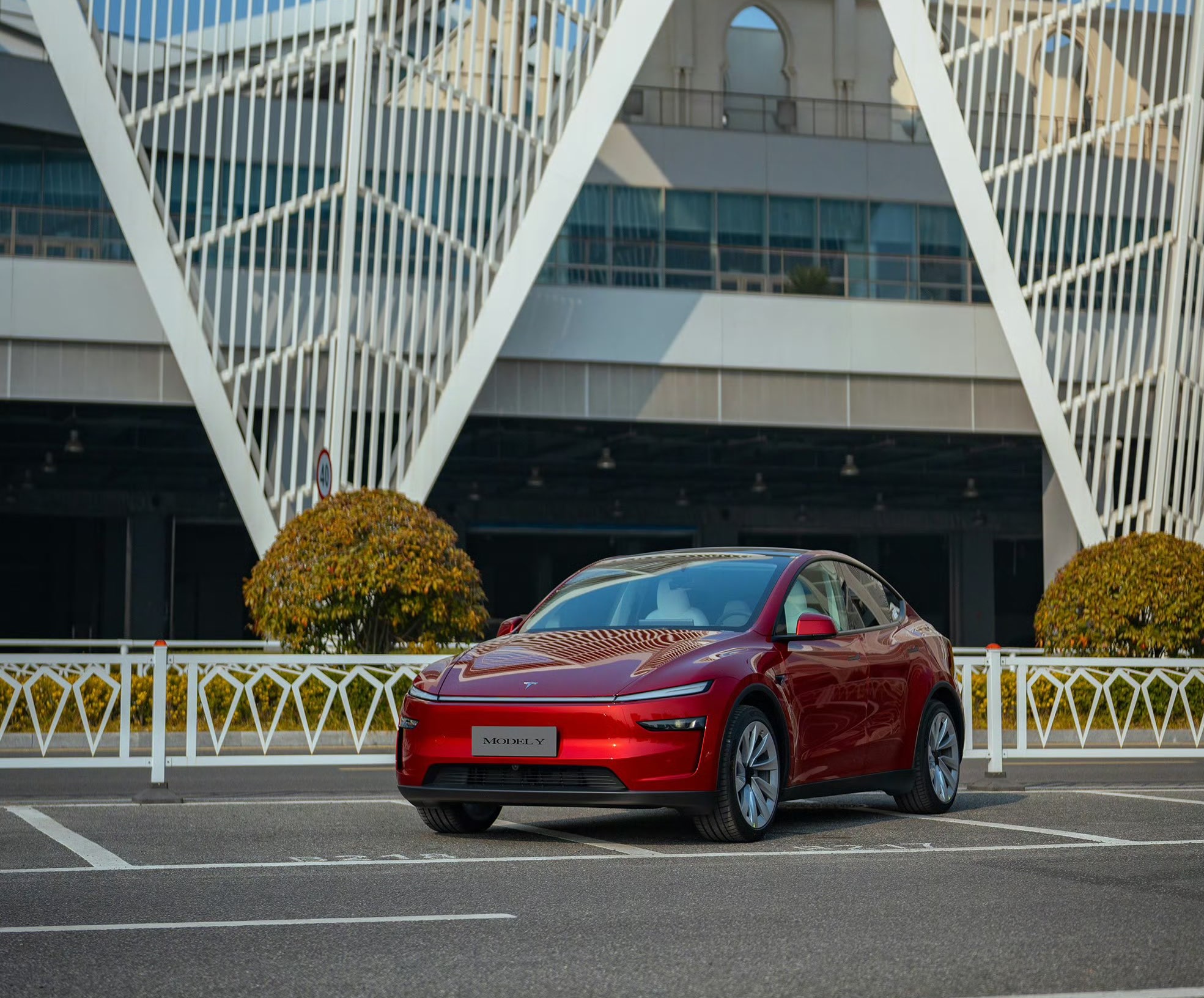
Mizuho analyst Vijay Rakesh lowered Tesla’s (NASDAQ:TSLA) price target to $475 from $485, citing potential 2026 EV subsidy cuts in the U.S. and China that could pressure deliveries. The firm maintained its Outperform rating for the electric vehicle maker, however.
As per the Mizuho analyst, upcoming changes to EV incentives in the U.S. and China could affect Tesla’s unit growth more than previously expected. The U.S. accounted for roughly 37% of Tesla’s third-quarter 2025 sales, while China represented about 34%, making both markets highly sensitive to policy shifts. Potential 50% cuts to Chinese subsidies and reduced U.S. incentives affected the firm’s outlook.
With those pressures factored in, the firm now expects Tesla to deliver 1.75 million vehicles in 2026 and 2 million in 2027, slightly below consensus estimates of 1.82 million and 2.15 million, respectively. The analyst was cautiously optimistic, as near-term pressure from subsidies is there, but the company’s long-term tech roadmap remains very compelling.
Despite the revised target, Mizuho remained optimistic on Tesla’s long-term technology roadmap. The firm highlighted three major growth drivers into 2027: the broader adoption of Full Self-Driving V14, the expansion of Tesla’s Robotaxi service, and the commercialization of Optimus, the company’s humanoid robot.
“We are lowering TSLA Ests/PT to $475 with Potential BEV headwinds in 2026E. We believe into 2026E, US (~37% of TSLA 3Q25 sales) EV subsidy cuts and China (34% of TSLA 3Q25 sales) potential 50% EV subsidy cuts could be a headwind to EV deliveries.
“We are now estimating TSLA deliveries for 2026/27E at 1.75M/2.00M (slightly below cons. 1.82M/2.15M). We see some LT drivers with FSD v14 adoption for autonomous, robotaxi launches, and humanoid robots into 2027 driving strength,” the analyst noted.
Investor's Corner
Tesla stock lands elusive ‘must own’ status from Wall Street firm
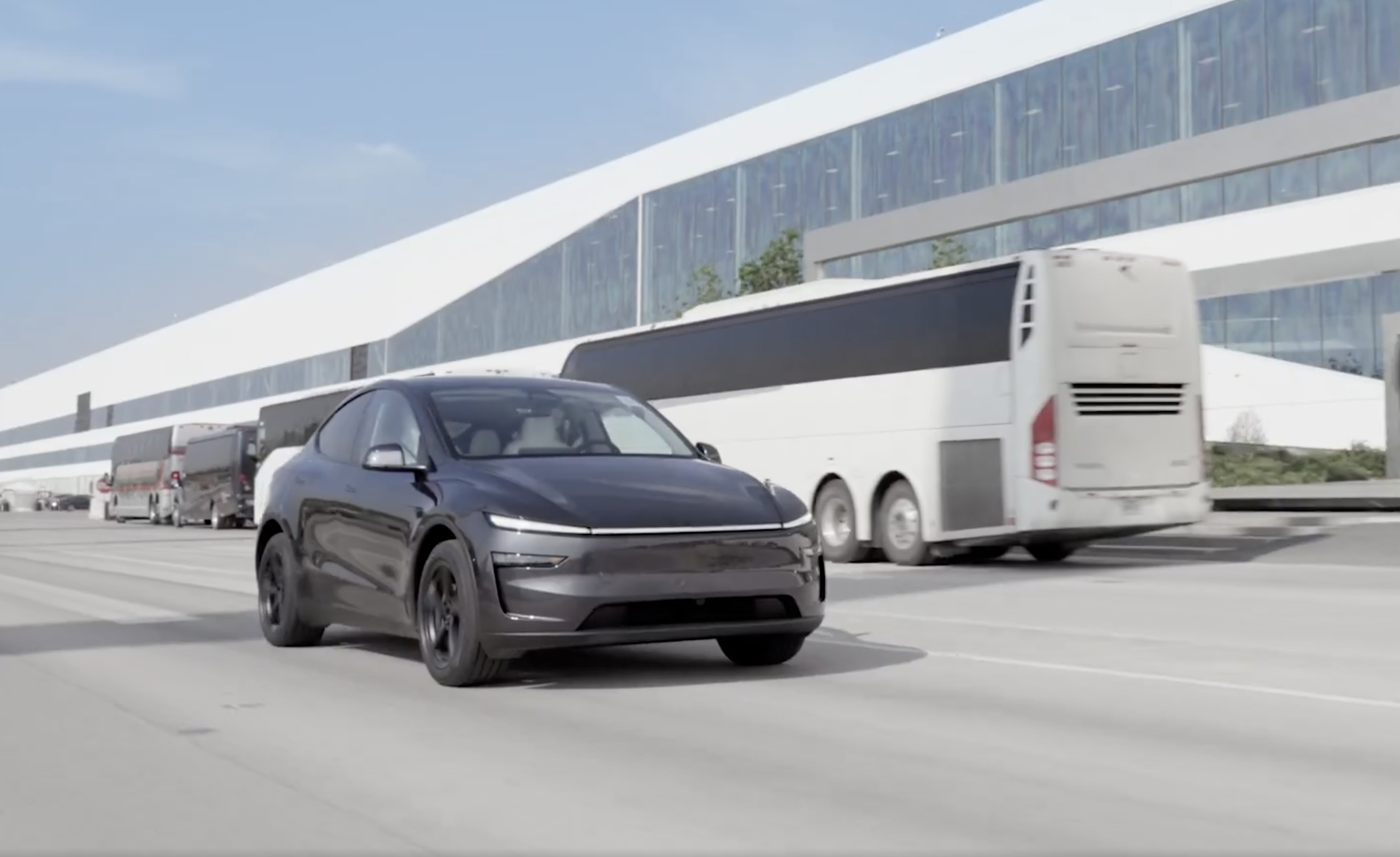
Tesla stock (NASDAQ: TSLA) has landed an elusive “must own” status from Wall Street firm Melius, according to a new note released early this week.
Analyst Rob Wertheimer said Tesla will lead the charge in world-changing tech, given the company’s focus on self-driving, autonomy, and Robotaxi. In a note to investors, Wertheimer said “the world is about to change, dramatically,” because of the advent of self-driving cars.
He looks at the industry and sees many potential players, but the firm says there will only be one true winner:
“Our point is not that Tesla is at risk, it’s that everybody else is.”
The major argument is that autonomy is nearing a tipping point where years of chipping away at the software and data needed to develop a sound, safe, and effective form of autonomous driving technology turn into an avalanche of progress.
Wertheimer believes autonomy is a $7 trillion sector,” and in the coming years, investors will see “hundreds of billions in value shift to Tesla.”
A lot of the major growth has to do with the all-too-common “butts in seats” strategy, as Wertheimer believes that only a fraction of people in the United States have ridden in a self-driving car. In Tesla’s regard, only “tens of thousands” have tried Tesla’s latest Full Self-Driving (Supervised) version, which is v14.
Tesla Full Self-Driving v14.2 – Full Review, the Good and the Bad
When it reaches a widespread rollout and more people are able to experience Tesla Full Self-Driving v14, he believes “it will shock most people.”
Citing things like Tesla’s massive data pool from its vehicles, as well as its shift to end-to-end neural nets in 2021 and 2022, as well as the upcoming AI5 chip, which will be put into a handful of vehicles next year, but will reach a wider rollout in 2027, Melius believes many investors are not aware of the pace of advancement in self-driving.
Tesla’s lead in its self-driving efforts is expanding, Wertheimer says. The company is making strategic choices on everything from hardware to software, manufacturing, and overall vehicle design. He says Tesla has left legacy automakers struggling to keep pace as they still rely on outdated architectures and fragmented supplier systems.
Tesla shares are up over 6 percent at 10:40 a.m. on the East Coast, trading at around $416.
Investor's Corner
Tesla analyst maintains $500 PT, says FSD drives better than humans now
The team also met with Tesla leaders for more than an hour to discuss autonomy, chip development, and upcoming deployment plans.

Tesla (NASDAQ:TSLA) received fresh support from Piper Sandler this week after analysts toured the Fremont Factory and tested the company’s latest Full Self-Driving software. The firm reaffirmed its $500 price target, stating that FSD V14 delivered a notably smooth robotaxi demonstration and may already perform at levels comparable to, if not better than, average human drivers.
The team also met with Tesla leaders for more than an hour to discuss autonomy, chip development, and upcoming deployment plans.
Analysts highlight autonomy progress
During more than 75 minutes of focused discussions, analysts reportedly focused on FSD v14’s updates. Piper Sandler’s team pointed to meaningful strides in perception, object handling, and overall ride smoothness during the robotaxi demo.
The visit also included discussions on updates to Tesla’s in-house chip initiatives, its Optimus program, and the growth of the company’s battery storage business. Analysts noted that Tesla continues refining cost structures and capital expenditure expectations, which are key elements in future margin recovery, as noted in a Yahoo Finance report.
Analyst Alexander Potter noted that “we think FSD is a truly impressive product that is (probably) already better at driving than the average American.” This conclusion was strengthened by what he described as a “flawless robotaxi ride to the hotel.”
Street targets diverge on TSLA
While Piper Sandler stands by its $500 target, it is not the highest estimate on the Street. Wedbush, for one, has a $600 per share price target for TSLA stock.
Other institutions have also weighed in on TSLA stock as of late. HSBC reiterated a Reduce rating with a $131 target, citing a gap between earnings fundamentals and the company’s market value. By contrast, TD Cowen maintained a Buy rating and a $509 target, pointing to strong autonomous driving demonstrations in Austin and the pace of software-driven improvements.
Stifel analysts also lifted their price target for Tesla to $508 per share over the company’s ongoing robotaxi and FSD programs.

